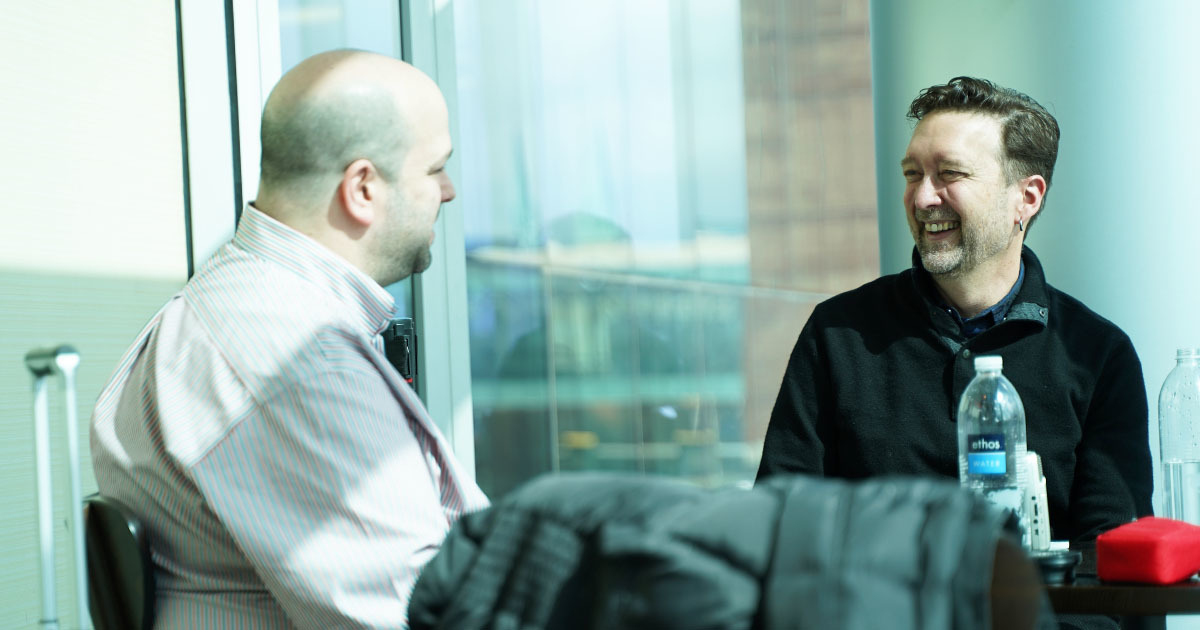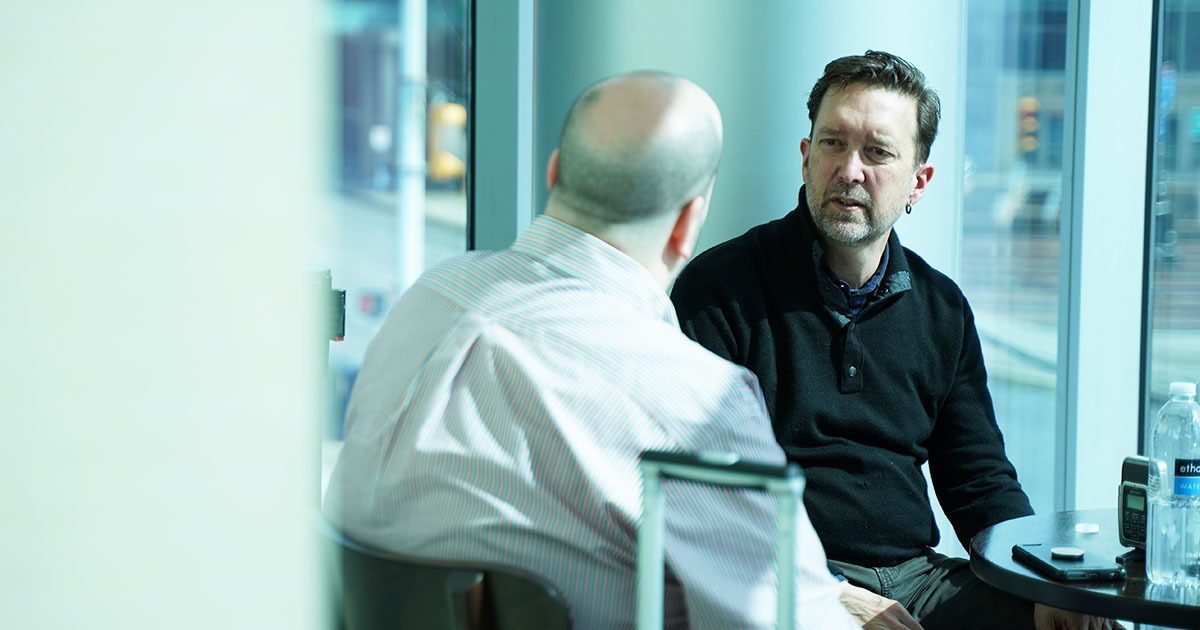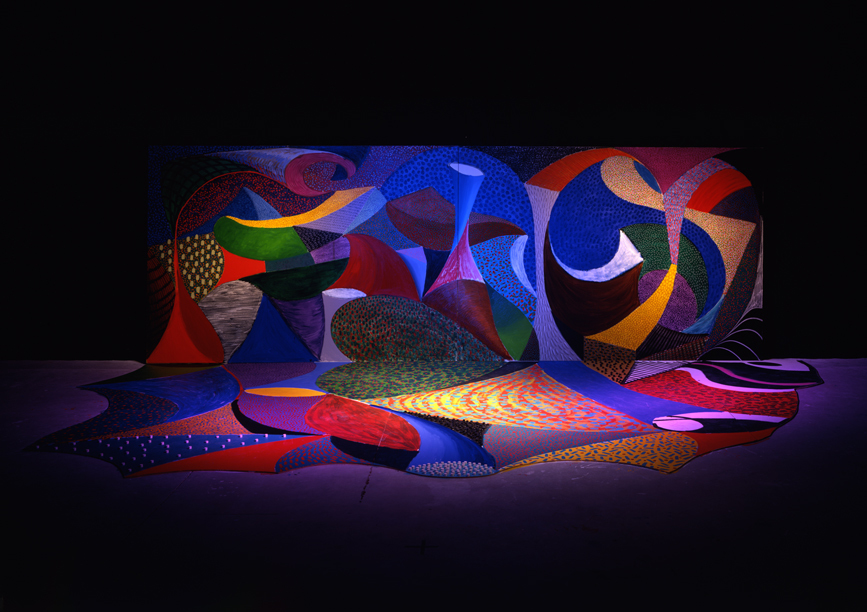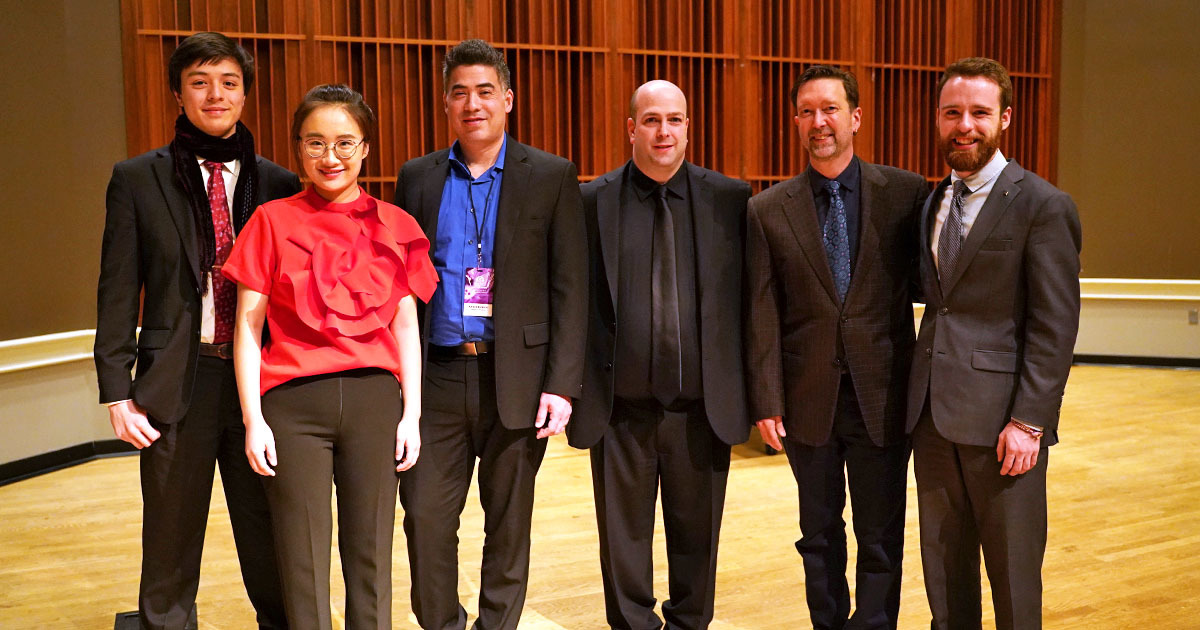Mark Engebretson: Composer for the 2019 Vandoren Emerging Artist Competition
Date Posted: July 31, 2019

Mark Engebretson was one of the composers who was chosen to write for the Vandoren Emerging Artist grand prize winners. Here we talk with Mark about the piece he wrote and some advice for those pursuing composition.
David Gould: Mark Engebretson, who was commissioned and wrote "Hockney for a Performance's Painting" is with us for this interview
How did you get started composing and what lead you down this path?
I started writing some songs when I was in high school for a band that I had, but I really got started in college. I was studying saxophone first at St. Olaf College, and then the University of Minnesota. I just needed to write some music. I couldn't tell you why, but I had an inner need to make music that was my own, so I started to do it. I had a handful of lessons with Eric Stokes. I couldn't pursue it formally because I was too busy practicing, but simply I had to make some music.
DG: How was it running the parallel career as composer and saxophonist? How do you balance all of that?
When I started out, I was a saxophonist and I did my undergraduate in that instrument and then I also studied in France. Then I started taking formal composition lessons while in France with Michel Fuste-Lambezat. I was still primarily a saxophonist who was studying composition, but I did have some success and got positive encouragement to continue. Later on, when I decided to do a Masters degree at Northwestern University, I asked if I could do it in both composition and saxophone. I did the degree requirements for both areas and I got a Master of Music in Saxophone and Composition.
Later on, I lived in Sweden where I started getting my first commissions. It was a band piece that I wrote for STIM, the official composer's agency in Sweden.
Then I lived in Vienna as part of the Vienna Saxophone Quartet and I got a number of commissions from the Austrian Ministry of Culture to write pieces. After a while when I decided to return to the States to do doctoral studies, I went to Northwestern again in composition. The balance of my work began to shift prominently towards composition.
It's always been hard to balance those two things, especially during those study times. It seemed like I could do one or the other. Either I practiced a lot and played a concert, or I composed and couldn't find my horn. Now, with my job, I'm a professor of composition full time but the job itself allows me to be active as a performer. My performing activities are a bit less than my composition activities, but I have enough time to practice and play with my saxophone quartet. It's all worked out pretty well.

DG: Tell me how Hockney or “Performance as Painting" came about?
In the first place, the piece really came about when I got an email from David Gould asking if I'd be interested in this project. The first part of that was to try to imagine a piece that would be appropriate for this venue and setting. David asked for a piece that would be a really good college/graduate level performer but also showcase that person as the winner of this competition. It would also work well with the ensemble: Alto saxophone, cello, and piano for performance at this [Music for All] event. My first thing was to think about a piece that nailed those aspects of the request.
The challenge for me was to think about the cello and piano which are not my instruments. I love both very much, but I especially like the cello, how it blends with the saxophone, and I like all of the expressive performance capabilities it has. I got interested in a particular performance technique that comes from Appalachian folk music which is called the “chop." It sounds just like that: chop! I wanted to use that technique, but not necessarily the Appalachian folk music itself, but the performance technique. I wanted to try to connect that technique to the things that the other players in the ensemble were playing. Hopefully, that idea makes its rounds around the ensemble.
That's where a lot of the musical ideas came. Because of that technique I chose some colorful sounds in the saxophone (the multiphonics and slap-tongue) and piano sounds that I think are bright and bubbly. I felt that the piece was developing into something that was colorful.
I was inspired as I was getting to the end of composing the piece by a work by the great painter David Hockney that he called Snail's Space, "Painting as Performance" which is at the National Portrait Gallery in Washington D.C. This is a painting that's very colorful and beautiful. It's a very large canvas that begins on the floor and wraps up along the wall. It's got its own room built around it. Then he also created a computer-controlled lighting sequence that changes the lighting atmosphere as you view the painting. He called it "painting as performance." The imagery was perfect, and I had admired his work for a long time. I saw it when I was a student in Minneapolis in the early 1980s. When I saw it, I thought of my own piece, and that it is not like painting as performance but performance as painting. I turned it the other way around and named the piece for him as an homage to what a brilliant artist that he's been.

Snail's Space, "Painting as Performance" by David Hockney
Rebecca Scholldorf: What are your impressions of the future of saxophone compositions?
You'll hear that the extended techniques heard in this piece are not just in the vernacular of the saxophone, it does tie to vernacular music more generally in the context of this piece. It's not like something people are going to hear and say it's ugly and weird...it belongs there.
As I was growing up as a saxophonist and a composer, the "Kool-Aid" that we had to drink was this modernist way of thinking about music, historical progression and trying to develop new sounds, techniques, and languages for the sake of the progressive development of the language of music.
The emphasis on that time was the discovery of new things for the sake of the discovery. At this point in history (and this is 40 or 50 years later), we know what those techniques are, what those sounds are, and what those possibilities are, so we're not in the game of trying to figure out the newest, innovative performance techniques. You can't even throw the instrument off the roof and run it over the steam-roller because David Letterman already did that...
We're not trying to invent a whole new universe of sounds, but yet, all of those things that have been done are available to us as composers and performers. By all of it, I mean everything. You've got Renaissance, Medieval, Baroque, Classical, Romantic, Chance, Aleatoric, Industrial sounds, and anything you can possibly think of. There's nobody that can tell you these don't belong in music because we know that they do. Our job is to find interesting ways to use those resources that are available to us. That's what I hope to have done.
DG: What's it like to be married to another saxophonist?
My wife is Susan Fancher who's one of the great saxophonists in the world. We met studying saxophone in Bordeaux, France. We grew up, got married, and made our careers together as musicians. It's been a really wonderful and terrific blessing. We've learned a ton from each other and we keep learning. We’ve worked together a lot as performers, and she’s also served as a sounding board, voice of reason and editor for my pieces. We have this exchange and its been a lifelong exchange of ideas where we know each other extremely well.

(L to R): Rico Jones, Ning Zhang, Kenji Bunch, David Gould, Mark Engebretson, and Sean Miller at the Music for All Festival in Indianapolis, IN
DG: How many saxophones do you have in your house?
It's one soprano, two altos, one tenor, one bari, and a C-melody.
RS: Do you think it's a good idea to be diversified - having both degrees in saxophone and composition?
For me, being a composer is being a musician, and the performance element is an important part of the composing. I understand what it is like to stand on stage, and present music to the audience. If I need inspiration, either I play, or I listen to others perform. So for me, that diversity is not just a good idea, but an essential part of what I do. I encourage my own students to play or sing, and perform in public. Some are better at it than others, but it helps all of them.
Going back to the top, one of the things that makes a composer a composer is simply the need to do it. It's not dissatisfaction with the other music that's there, but there's somehow music that you need to have existing that would speak to you or from you that can't exist unless you make it yourself.
Mark Engebretson (b. 1964) is Associate Professor of Composition and Electronic Music at the University of North Carolina at Greensboro. He received commissions from the Fromm Music Foundation, the Thomas S. Kenan Institute for the Arts, the Barlow Foundation and is the 2011 recipient of the North Carolina Council for the Arts Composer Fellowship. His works have been presented at SEAMUS, ICMC, Bowling Green Festival of New Music, Third Practice Festival, Wien Modern, Gaida Festival, Sonoimagenes, Hörgänge Festival, Ny Musikk, Indiana State University New Music Festival, the Florida Electroacoustic Music Festival, ISCM Festivals, World Saxophone Congresses. He founded the UNCG New Music Festival in 2004, and is director of the A.V. Williams Electronic Music Studio at UNCG.
Your performance career awaits you. Apply to the Vandoren Emerging Artist (VEA) Competition. Review audition materials, rules, deadlines, and prizes.
Subscribe to the We Are Vandoren E-newsletter (WAVE) to receive 4 weekly articles for Performers, Students, and Educators